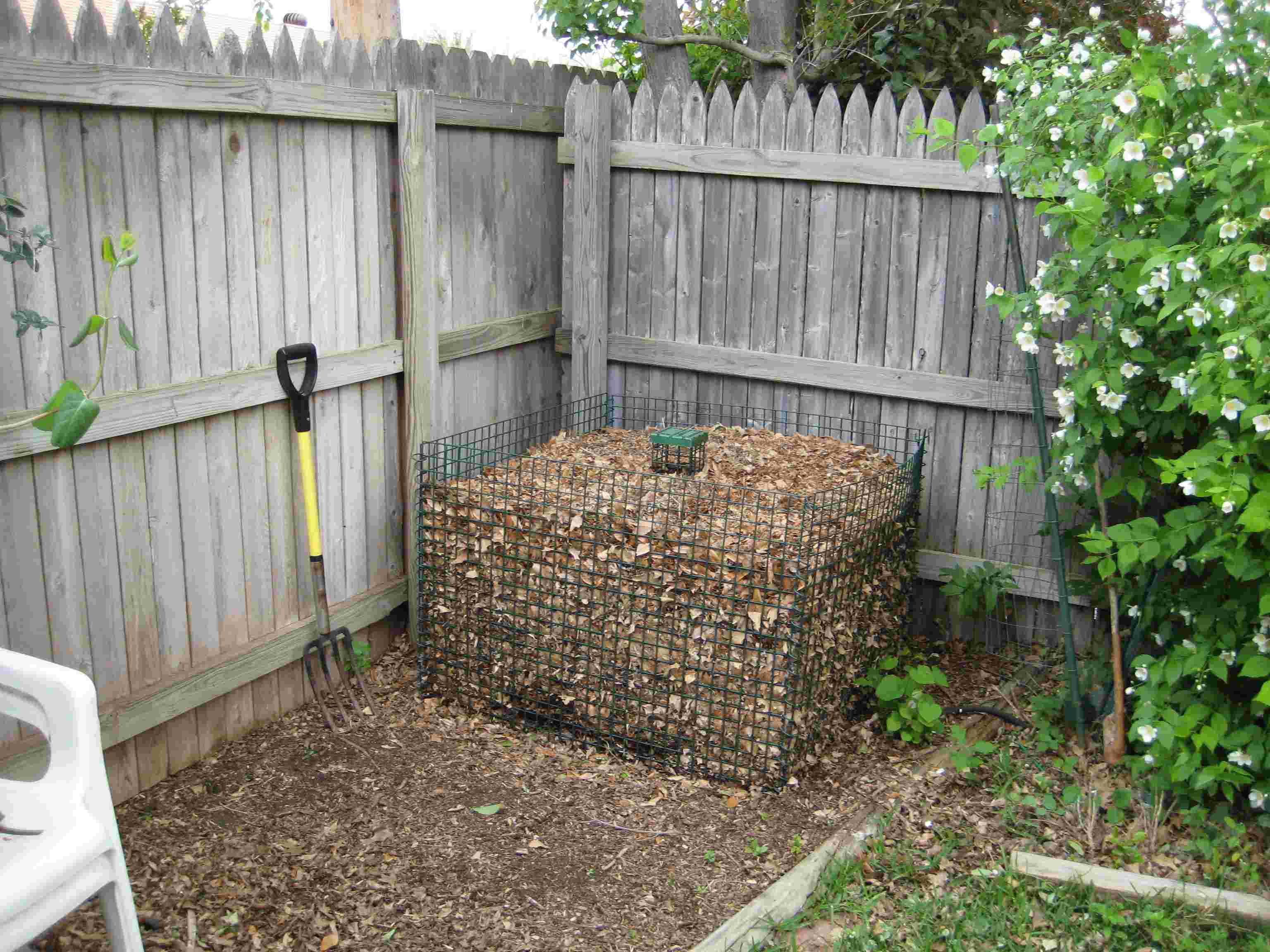Home>Gardening Basics>Understanding Soil>How To Test Your Soil


Understanding Soil
How To Test Your Soil
Published: February 11, 2024
Learn how to test your soil and understand its composition with our comprehensive guide. Discover the key factors that affect plant growth and optimize your gardening efforts.
(Many of the links in this article redirect to a specific reviewed product. Your purchase of these products through affiliate links helps to generate commission for Chicagolandgardening.com, at no extra cost. Learn more)
Table of Contents
- Introduction
- Why Testing Your Soil is Important
- Different Methods of Soil Testing
- DIY Soil Test Kits
- Sending Soil Samples to a Laboratory
- Utilizing Digital Soil Testing Tools
- Steps to Test Your Soil
- Collect Soil Samples
- Prepare Soil Samples for Testing
- Conducting the Soil Test
- Interpreting Test Results
- How to Adjust Soil based on Test Results
- Conclusion
Introduction
Welcome to the world of soil testing! Whether you’re a seasoned gardener or just starting out, understanding the composition of your soil is crucial for successful plant growth. Soil testing provides valuable insights into the nutrients, pH levels, and overall health of your soil, allowing you to make informed decisions about fertilizer application and soil amendments.
So why exactly is testing your soil so important? Well, think of your soil as the foundation of your garden. Just like a strong foundation is essential for a sturdy house, healthy soil sets the stage for thriving plants. By assessing the composition of your soil, you can identify any deficiencies or imbalances that may be hindering plant growth. This knowledge empowers you to take targeted actions to improve the quality of your soil and maximize plant health.
There are several methods available for testing your soil, each with its own advantages and drawbacks. DIY soil test kits offer a quick and affordable option for home gardeners, while professional soil laboratories provide more comprehensive analyses. In recent years, digital soil testing tools have also emerged, providing convenient and portable solutions for on-the-spot soil testing.
In this article, we will explore these different methods of soil testing and guide you through the steps to test your soil effectively. We’ll also discuss how to interpret soil test results and offer recommendations on adjusting your soil based on those results. So, let’s get our hands dirty and dive into the world of soil testing!
Why Testing Your Soil is Important
Testing your soil is not just an optional task for serious gardeners; it is an essential step in ensuring the success of your plants. Here are a few reasons why testing your soil is crucial:
- Optimizing Nutrient Levels: Your plants rely on a balanced supply of nutrients for healthy growth. Through soil testing, you can determine the nutrient levels in your soil, such as nitrogen, phosphorus, and potassium. This information allows you to make informed decisions about fertilizer application, ensuring that your plants receive the right nutrients in the right amounts.
- Identifying Soil pH: Soil pH significantly influences the availability of nutrients to plants. Some plants thrive in acidic soil, while others prefer alkaline conditions. By testing your soil, you can identify its pH level and make necessary adjustments to create an optimal environment for your specific plant species.
- Preventing Nutrient Imbalances: Excessive or deficient levels of certain nutrients can lead to plant health problems. Soil testing helps identify any imbalances in nutrient levels, allowing you to take corrective measures. For example, excessive phosphorus can inhibit the uptake of iron, leading to nutrient deficiencies in plants. By addressing these imbalances, you can avoid plant stress and promote vigorous growth.
- Determining Soil Texture and Structure: Soil texture refers to the relative proportions of sand, silt, and clay particles. Each soil type has different properties, such as water-holding capacity and drainage. By testing your soil, you can understand its texture and structure, enabling you to choose plants that are well-suited to its characteristics and implement appropriate irrigation strategies.
- Identifying Soil Contaminants: Soil can sometimes be contaminated with heavy metals, pesticides, or other harmful substances. These contaminants can have detrimental effects on plant health as well as human and environmental well-being. Through soil testing, you can identify any potential contaminants and take steps to mitigate their impact.
By understanding the composition of your soil, you can tailor your gardening practices to meet the specific needs of your plants. Soil testing gives you the knowledge to make informed decisions about fertilization, pH adjustments, and other amendments, maximizing the potential of your garden. So don’t underestimate the power of soil testing; it’s the secret weapon to unlocking the full potential of your plants.
Different Methods of Soil Testing
When it comes to testing your soil, there are several methods available, each with its own advantages and limitations. Let’s explore three common methods of soil testing:
- DIY Soil Test Kits: DIY soil test kits are widely available and offer a convenient and affordable option for home gardeners. These kits typically include test strips or capsules containing reagents that react with soil components. By following the instructions provided, you can easily test pH levels, nutrient levels, and sometimes even soil composition. While DIY kits can provide a basic understanding of your soil, they may not offer the precision and comprehensive analysis of professional laboratory testing.
- Sending Soil Samples to a Laboratory: Professional soil laboratories offer more comprehensive soil analysis. To utilize this method, you’ll need to take soil samples from various areas of your garden, ensuring they are representative of the entire plot. These samples are then sent to the laboratory, where they undergo rigorous testing. The laboratory provides detailed reports on nutrient levels, pH, organic matter content, and other relevant parameters. Although laboratory testing may be more costly and time-consuming, it offers precise and detailed information to guide your soil management decisions.
- Utilizing Digital Soil Testing Tools: With advancements in technology, digital soil testing tools have emerged as a portable and convenient option for on-the-spot testing. These tools often utilize sensors or probes to measure parameters such as pH, moisture content, and nutrient levels. Some advanced digital testers even connect to smartphone applications to provide real-time data analysis and recommendations. While digital testing tools offer quick results and ease of use, they may have limitations in terms of accuracy and the comprehensive nature of the analysis.
The choice of soil testing method depends on various factors, including your budget, time constraints, and the level of detail you require. DIY kits are a good starting point for basic assessments, while laboratory testing provides more in-depth analysis. Digital soil testing tools offer a convenient option for quick measurements in the field. Whichever method you choose, remember that regular soil testing is key to maintaining optimal soil health and ensuring the success of your garden.
DIY Soil Test Kits
DIY soil test kits are a popular option for home gardeners looking for a quick and affordable way to assess their soil composition. These kits typically come with test strips, capsules, or color-changing solutions that react with the components in the soil to provide information on pH levels, nutrient content, and sometimes soil composition.
Using a DIY soil test kit is relatively straightforward. Firstly, you’ll need to collect soil samples from different areas of your garden, ensuring they are representative of the entire space. Follow the instructions provided in the kit to prepare the soil samples for testing. This may involve removing any debris, rocks, or plant material from the samples.
Next, you’ll use the kit’s testing components to analyze the samples. The specific instructions may vary depending on the brand and type of kit, but generally, you’ll mix the soil with the provided reagents and compare the color change or measurement to a chart or scale. This will give you an indication of parameters such as pH levels and nutrient content.
It’s important to note that DIY soil test kits offer a basic and quick assessment of your soil. They are best suited for preliminary soil tests or continuous monitoring of pH levels. However, they may not provide the level of precision and comprehensive analysis that professional laboratory testing offers. DIY kits may also have limitations in terms of accuracy, especially when it comes to nutrient measurements.
Nevertheless, DIY soil test kits are a convenient tool for home gardeners to get a general understanding of their soil and make initial adjustments. They can be helpful in identifying whether your soil is acidic or alkaline, which informs your choice of plants and determines the need for pH adjustments. Furthermore, some DIY kits can provide indications of nutrient deficiencies or excesses, allowing you to tailor your fertilizer applications accordingly.
Overall, DIY soil test kits are a great starting point for those new to soil testing or for quick and basic assessments. Just keep in mind that for a more detailed and precise analysis of your soil, professional laboratory testing or digital soil testing tools may be needed.
Sending Soil Samples to a Laboratory
If you’re looking for comprehensive and accurate information about your soil, sending soil samples to a professional laboratory is the way to go. Soil laboratories provide detailed analysis of nutrient levels, pH, organic matter content, and other relevant parameters, giving you a comprehensive understanding of your soil’s composition and health.
The first step in sending soil samples to a laboratory is to collect representative samples from different areas of your garden. It’s important to ensure that the samples are collected at the appropriate depth and from areas that are similar in terms of soil texture and vegetation. This helps ensure that the results obtained from the laboratory reflect the overall condition of your garden.
The collected soil samples should be properly labeled and packaged to maintain their integrity during transport. Most laboratories provide specific instructions on how to prepare and package the samples. It’s crucial to follow these instructions to ensure the accuracy of the analysis.
Once the soil samples are prepared, they can be sent to the laboratory through mail or courier services. It’s advisable to check with the laboratory regarding their preferred shipping method and any specific requirements they may have. Some laboratories may provide pre-paid mailers or containers for sending the soil samples.
At the laboratory, the soil samples undergo a series of tests and analysis. The exact procedures may vary depending on the laboratory and the specific tests requested. Generally, the laboratory analyzes the soil samples for nutrient content, pH levels, organic matter content, cation exchange capacity, and sometimes soil texture and composition.
After the analysis is completed, the laboratory provides a detailed report with the results. This report includes recommendations for fertilizer application, pH adjustments, and other soil amendments based on the specific needs of your plants. It can serve as a valuable guide in optimizing your soil management practices.
While sending soil samples to a laboratory may be a more time-consuming and expensive option compared to DIY kits, it offers highly accurate and detailed information about your soil. This information is especially valuable when you’re dealing with specific plant nutrient deficiencies, soil imbalances, or when you’re planning to grow more demanding crops or plants that require precise soil conditions.
So, if you’re looking for a comprehensive understanding of your soil’s composition and want precise recommendations for soil management, sending soil samples to a professional laboratory is the way to go.
Utilizing Digital Soil Testing Tools
In recent years, digital soil testing tools have gained popularity as a convenient and portable option for on-the-spot soil testing. These tools utilize advanced technology, such as sensors or probes, to measure various parameters of the soil, including pH levels, moisture content, and nutrient levels.
One of the advantages of digital soil testing tools is their ease of use. Most digital testers are designed to be user-friendly, with clear instructions and simple interfaces. They often come in compact sizes, making them portable and convenient for field use.
To use a digital soil testing tool, you’ll typically need to insert the probe or sensor into the soil at the desired depth. The tool will then generate real-time data, which may be displayed directly on the device or transmitted to a smartphone application through wireless connectivity. This allows for quick and instant access to soil analysis results.
These digital tools can provide valuable information about the soil’s pH levels, moisture content, and sometimes even nutrient levels. Some advanced digital testers use algorithms and databases to provide recommendations based on the specific plant’s requirements and soil conditions.
Though digital soil testing tools offer convenience and immediate results, they also have certain limitations. The accuracy of these devices can vary, and they may not provide the same level of precision as professional laboratory testing. Additionally, digital tools may have a narrower focus, primarily focusing on pH levels and basic nutrient measurements.
However, utilizing digital soil testing tools can be beneficial for quick assessments, monitoring, and on-the-spot analysis. They are particularly useful for gardeners and farmers who need to make instant decisions in the field or who want continuous monitoring of soil conditions.
It’s important to note that while digital soil testing tools can provide useful information, periodic laboratory testing is still recommended for a more comprehensive analysis of your soil. Laboratory testing can offer detailed reports and analysis of nutrient levels, soil composition, and other important factors that digital tools may not capture.
Overall, digital soil testing tools serve as a valuable addition to a gardener’s toolbox, providing quick and convenient soil analysis on the go. They can assist in making immediate adjustments and monitoring soil conditions, complementing more comprehensive laboratory testing.
Steps to Test Your Soil
Testing your soil is a straightforward process that involves a few key steps. By following these steps, you can obtain accurate and reliable results to guide your soil management decisions. Here’s a breakdown of the soil testing process:
- Collect Soil Samples: Start by collecting soil samples from different areas of your garden. Use a clean shovel or trowel to scoop soil from a depth of 6-8 inches. Take samples from various spots within the designated area to get a representative sample of the entire space. Place each sample in a clean container and label it accordingly.
- Prepare Soil Samples for Testing: Remove any debris, rocks, or plant material from the soil samples. Break up any large clumps and thoroughly mix the soil to ensure a homogenous sample. Allow the soil to air-dry if it is excessively wet, as excessively wet samples can affect the accuracy of test results.
- Conducting the Soil Test: Depending on the method you choose, follow the instructions provided in the DIY soil test kit, laboratory testing kit, or digital soil testing tool. DIY kits often require mixing soil samples with reagents and comparing color changes, while laboratory testing involves sending the prepared soil samples to a professional lab. Digital soil testing tools usually require inserting a probe into the soil and following instructions provided by the device or connected mobile application.
- Interpreting Test Results: Once the soil test is completed, it’s time to interpret the results. The DIY kit or digital tool will typically provide straightforward instructions or a guide to help you understand the results. Laboratory testing results will be reported in a detailed analysis, often with recommendations for adjustments to improve soil health. Take note of important parameters such as pH levels, nutrient deficiencies or excesses, and any other relevant information that will guide your next steps.
- Adjusting Soil Based on Test Results: Use the test results to inform your soil management decisions. If the pH level is too high or too low, adjust it by adding lime or sulfur accordingly. For nutrient deficiencies or imbalances, consider applying fertilizers or organic amendments specific to the needs of your plants. Follow the recommended application rates and methods provided by the test results or consult with a local agricultural extension office or gardening expert for guidance.
Remember to keep a record of your soil test results and the actions you take to improve your soil. Regular soil testing, ideally every 2-3 years, will provide insight into the effectiveness of your soil management practices over time and help fine-tune your gardening approach.
By following these steps and conducting regular soil tests, you can ensure that your plants have the optimal growing conditions they need to thrive.
Collect Soil Samples
The first step in testing your soil is to collect representative soil samples from different areas of your garden. This ensures that the test results accurately reflect the overall condition of your soil. Proper soil sampling techniques are crucial to obtain reliable and meaningful results. Here’s how to collect soil samples:
- Determine the Sampling Areas: Divide your garden into sections based on factors such as plant types, soil variations, or areas with different fertilization histories. If you have a small garden, you can collect samples from the entire area. For larger gardens, identify representative areas that are roughly the same size and share similar characteristics.
- Gather the Sampling Tools: You’ll need a clean shovel, trowel, or soil probe to collect the samples. Make sure the tools are free from any contaminants, as they could affect the test results.
- Choose the Sampling Depth: The recommended depth for collecting soil samples is usually 6-8 inches. This depth represents the root zone where most plant nutrients are found. However, if you are testing for specific needs, such as lawn care or deep-rooted plants, adjust the sampling depth accordingly.
- Collect Soil Cores: Using the chosen tool, take multiple soil cores from each designated area. Insert the tool into the soil to the desired depth and remove a thin slice or core of soil. Repeat this process in various spots within the area to collect multiple samples. Aim for 10-15 soil cores per area to ensure a representative sample.
- Mix and Composite the Soil Samples: Combine the collected soil cores in a clean bucket or container. Remove any stones, roots, or debris from the samples. Thoroughly mix the soil cores together to create a homogenous composite sample. This composite sample will represent the soil from the designated area.
- Label and Store the Soil Samples: Label the container with the designated area’s name or code to distinguish it from other samples. It’s essential to keep the samples separate and well-identified. Allow the composite sample to air-dry if it is overly saturated, but avoid unnecessary handling or exposure to direct sunlight. Store the samples in a cool, dry place until you are ready to proceed with the testing or packing for laboratory analysis.
It’s important to note that different areas may require separate soil samples, especially if they have distinct characteristics or plant requirements. For example, sampling areas with different soil textures, slopes, or areas with different crops or plants can help you tailor your soil management practices accordingly.
By following proper soil sampling techniques, you ensure that your soil test results accurately represent the different areas of your garden. This information will guide you in making informed decisions regarding fertilization, pH adjustments, and other soil management practices, ultimately leading to healthier plants and a thriving garden.
Prepare Soil Samples for Testing
Once you have collected soil samples from different areas of your garden, the next step is to properly prepare the samples for testing. Proper preparation ensures that the samples are representative, free from contaminants, and ready for accurate analysis. Here’s how to prepare your soil samples for testing:
- Remove Obvious Contaminants: Begin by removing any stones, roots, sticks, or visible debris from the soil samples. These contaminants can interfere with the accuracy of the test results and may introduce unwanted elements into the analysis.
- Air-Dry if Necessary: If your soil samples are excessively wet, allow them to air-dry naturally before further processing. Spread the soil thinly on a clean surface, such as a tray or tarp, and leave it to dry in a well-ventilated area. Be sure to avoid any direct sunlight or excessive heat, as this can alter the composition of the soil and affect the test results. Stir the soil occasionally during the drying process to ensure even drying.
- Break up Clumps: Once the soil samples are dry or if they were already in a dry state, break up any clumps and remove aggregates by crumbling the soil between your fingers. Avoid excessive force that may alter the structure of the soil.
- Thoroughly Mix the Soil: Combine all the soil samples collected from different areas into a clean container. Thoroughly mix the soil by stirring or shaking the container to create a homogeneous composite sample. This mixing step ensures that the soil analysis represents an accurate average of the various areas sampled.
- Store the Prepared Samples: Transfer the mixed soil sample into a clean, labeled plastic bag or airtight container. Make sure to label the container with the appropriate information, such as the area or location the sample represents. Store the prepared samples in a cool, dry place until they are ready to be tested or packed for laboratory analysis.
It’s essential to handle the soil samples with care during the preparation process to prevent cross-contamination between samples. Additionally, avoid using containers or tools that may introduce unwanted elements or residues into the samples.
Preparing soil samples for testing ensures that the analysis accurately represents the overall condition of your garden. Proper sample preparation eliminates any visible contamination, breaks up soil aggregates, and creates a well-mixed composite sample. Following these steps will help ensure that your soil tests provide accurate and meaningful results, allowing you to make informed decisions about amending your soil for optimal plant growth.
Conducting the Soil Test
After properly preparing your soil samples, it’s time to conduct the soil test. The specific method of conducting the test will depend on the type of testing kit or equipment you’re using. Whether utilizing a DIY soil test kit, laboratory testing, or digital soil testing tool, follow the instructions provided to ensure accurate and reliable results. Here’s a general overview of conducting a soil test:
- Read the Instructions: Carefully read and understand the instructions provided with your chosen soil testing method. Ensure that you have all the necessary materials and equipment ready to conduct the test.
- Adhere to Safety Precautions: Follow any safety precautions mentioned in the instructions. Some tests may require the use of protective gloves, goggles, or other safety gear to prevent harm from chemicals or other substances.
- Perform the Test: Depending on the method you’re using, follow the provided instructions step by step. This may involve adding specific reagents or performing specific procedures outlined in the instructions. Take your time and avoid rushing through the process to ensure accuracy.
- Record the Results: As you conduct the test, record the results as instructed. Some tests may require comparing color changes, measuring values on a scale, or entering data into a digital device or application. Accurately record the results to refer to them later during the interpretation and analysis phase.
- Repeat if Necessary: Some testing methods require duplicating the steps or conducting multiple tests for each soil sample. If instructed to do so, repeat the test accordingly, ensuring you have sufficient quantities of reagents or materials to perform the necessary repetitions.
It’s important to follow the instructions provided with your chosen testing method precisely. Deviating from the specified procedures or using different quantities or materials may yield inaccurate and unreliable results.
If you’re conducting a DIY soil test kit, pay close attention to color changes or measurements as instructed. For laboratory testing, ensure that the prepared soil samples are packed and shipped according to the laboratory’s guidelines. If utilizing a digital soil testing tool, carefully insert the probe into the soil and follow the instructions on the device or connected application.
By conducting the soil test accurately and adhering to the instructions, you will obtain reliable and informative results that will guide your decision-making process for soil amendments and plant health management.
Interpreting Test Results
Once you have conducted the soil test and obtained the results, the next step is to interpret and analyze the data. Properly understanding the test results is crucial for making informed decisions about soil amendments and plant care. Here’s how to interpret your soil test results effectively:
- Refer to Key Parameters: Review the test results and identify the key parameters that were tested, such as pH levels, nutrient concentrations, organic matter content, and soil composition. These parameters will provide valuable insights into the health and fertility of your soil.
- Compare to Optimal Ranges: Refer to recommended optimal ranges for each parameter based on the type of plants you are growing. These ranges can vary depending on the specific needs of different plants. Compare your test results to these ranges to determine if any adjustments are necessary.
- Analyze Nutrient Levels: Analyze the nutrient levels in your soil, paying attention to any deficiencies or excesses. Nutrients such as nitrogen (N), phosphorus (P), and potassium (K) are usually measured and reported in the test results. Low nutrient levels may require supplemental fertilization, while excessive levels may lead to nutrient imbalances and potential harm to plants.
- Consider pH Levels: pH levels strongly influence nutrient availability to plants. Check the pH value in your test results, which indicates the acidity or alkalinity of the soil. Some plants prefer slightly acidic soil, while others thrive in more alkaline conditions. Adjusting the pH levels can be done through soil amendments, such as adding lime to raise pH or sulfur to lower pH.
- Review Other Parameters: Take note of other parameters, such as organic matter content, cation exchange capacity, and soil composition. These factors can affect soil structure, water-holding capacity, and nutrient retention. Understanding these values will help you address any specific soil issues and optimize the overall health of your soil.
Interpreting your test results may also involve considering the specific requirements of the plants you intend to grow. Certain plants may have particular nutrient preferences or pH requirements, which should be taken into account when analyzing the results.
If you are unsure about the meaning or significance of any results, consult with a local cooperative extension office, agricultural expert, or professional soil analyst. They can provide further guidance and help you make accurate interpretations based on your specific soil conditions and plant requirements.
By effectively interpreting your test results, you can identify the necessary actions to improve your soil’s health and fertility, ensuring optimal conditions for plant growth and development.
How to Adjust Soil based on Test Results
Adjusting your soil based on the test results is a crucial step in optimizing its fertility and creating an ideal environment for plant growth. Here are some common adjustments you may need to make based on different test results:
- pH Adjustments: If the pH level in your soil test results indicates that it is too acidic or alkaline for your desired plants, you can make pH adjustments. To raise the pH of acidic soil, you can add agricultural lime according to the recommended application rates. For lowering the pH of alkaline soil, applying elemental sulfur is often effective. It’s important to follow the application instructions carefully and retest the soil periodically to monitor the pH changes.
- Nutrient Applications: If your soil test results reveal nutrient deficiencies, you can apply fertilizers or organic amendments to supply the lacking nutrients. For example, a low nitrogen (N) reading may indicate the need for a nitrogen-based fertilizer, while phosphorus (P) or potassium (K) deficiencies can be addressed using fertilizers with higher concentrations of these nutrients. Organic amendments, such as compost or manure, can also provide a slow-release source of nutrients to enhance soil fertility.
- Organic Matter Addition: If your soil has a low organic matter content, incorporating organic matter into the soil can greatly improve its overall health and fertility. This can be done by adding compost, leaf litter, or well-rotted manure. Organic matter improves soil structure, increases water-holding capacity, enhances nutrient availability, and promotes beneficial microbial activity.
- Soil Structure Improvement: If your soil has poor structure, lacks drainage, or is prone to compacting, amendments such as sand or compost can be incorporated to improve its texture and porosity. This allows for better water infiltration, root penetration, and nutrient movement within the soil.
- Addressing Excess Nutrients: If your soil test results indicate excessive levels of nutrients, it’s important to take action to restore balance. This may involve reducing or eliminating the use of fertilizers high in the specific nutrient, adjusting irrigation practices, or implementing remediation techniques to prevent nutrient leaching or runoff.
When adjusting your soil based on the test results, it’s important to follow the recommended application rates and guidelines provided in the soil test report. Over-application of amendments can lead to nutrient imbalances or environmental issues, while under-application may not effectively address the soil deficiencies.
Remember to retest the soil periodically to monitor the effectiveness of your adjustments and make any necessary modifications as your plants’ needs change over time. Regular soil testing will help ensure that your soil remains balanced and provides an optimal environment for healthy plant growth.
If you have any uncertainties or questions regarding soil adjustments, consult with a local agricultural extension office or gardening expert. They can provide personalized advice based on your specific soil conditions and plant requirements.
Conclusion
Testing your soil is a crucial step in maintaining healthy and thriving plants. By understanding the composition of your soil, you can make informed decisions about fertilization, pH adjustments, and other soil amendments, ensuring optimal growing conditions for your plants.
In this article, we explored different methods of soil testing, including DIY soil test kits, laboratory testing, and digital soil testing tools. Each method offers its own advantages and limitations, allowing you to choose the most suitable option based on your needs and resources.
We also discussed the step-by-step process of testing your soil, from collecting soil samples to interpreting the test results. Proper sample collection and preparation are essential to obtain accurate and representative results. Interpreting the test results allows you to identify nutrient deficiencies, pH imbalances, and other soil parameters that may require adjustments.
Based on the test results, you can take specific actions to improve your soil. Adjustments may involve pH modifications, nutrient applications, organic matter additions, improving soil structure, or addressing excess nutrients. Following recommended guidelines and periodically retesting your soil will ensure that your adjustments are effective and sustainable.
Remember, soil testing is an ongoing process. It is recommended to test your soil every 2-3 years or whenever you notice changes in plant health or growth. By regularly assessing your soil, you can proactively address any issues and maintain optimal soil health for the long-term success of your garden.
So, don’t underestimate the power of soil testing. It is an invaluable tool that empowers you to create a nurturing environment for your plants and ensure a thriving garden. By understanding your soil, you’re equipped with the knowledge to take appropriate actions and grow your plants to their fullest potential.










